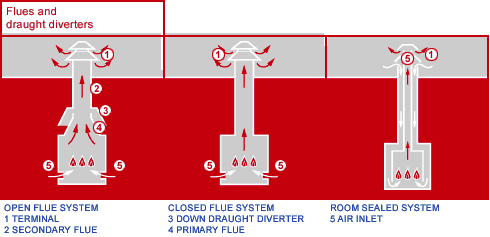Cooking, heating, refrigerating and lighting appliances could all ignite or fuel a fire on your boat. The aim of this Part is to minimise the risk of fire and explosion caused by leaked fuel or overheating surfaces or materials. It also aims to control potential sources of ignition, such as pilot lights.
The provisions of Part 8 in the 2002 BSS Standards are mandatory for non-private boats where applicable.
Making sure appliances can automatically cut off the fuel supply if the flame fails, and that appliances with naked flames are turned off and automatic ignition systems disabled before taking fuel onboard, particularly petrol, will help reduce the risks of a fire or explosion.
Inadequate ventilation has been the cause of avoidable and tragic accidents on board boats and incomplete or inefficient combustion of gas, solid or liquid fuels can lead to a lethal build-up of carbon monoxide. You can help prevent this by making sure appliances and their fuel supplies are properly installed and serviced and the by-products of combustion are safely dispersed (see flue components, room-sealed appliances and ventilation) to the outside environment.

There is a growing recognition of the risks associated with the use of non room-sealed gas appliances when used in confined spaces such as boats. These risks include poisoning and suffocation to individuals on board from improperly flued and ventilated appliances. So new LPG appliances must be room sealed, except where room-sealing is not physically possible, i.e. cooking appliances.
There is one specific exception to this rule and this is for LPG instantaneous water heaters. Based on the good previous safety record of these particular appliances, and until such a time as a room-sealed direct replacement becomes easily available, British Waterways and the Environment Agency accept the continued installation of instantaneous water heaters on private boats. If you are changing your non-room sealed instantaneous water heater it's strongly recommended that you consider room sealed alternatives.
The production of carbon monoxide at low rates over a period of time can lead to dangerous accumulations of this noxious gas in enclosed spaces. For this reason appliances which operate for extended periods, and particularly during the night, must either be fitted with effective devices which automatically turn them off if carbon monoxide is detected or be of a room-sealed type. The risk from older appliances of carbon monoxide poisoning is so great that it's intended to prohibit the installation and use of non room-sealed refrigerators or central heating appliances on inland waterways boats after 1 January 2006. When buying an appliance it is a good idea to make sure that it's suitable for use in your boat. Manufacturers may provide an assurance of suitability by any of the following means:
- installation instructions include a section specific to boats
- brochures and other literature aimed at the boat-owner market
- conformity with relevant published Standards.
Whilst there is no requirement in these Standards to prove the design purpose of any appliance, general checks regarding damage, deterioration and specific checks on the materials used will help identify inappropriate equipment. Don't forget, if your appliance is not working safely and effectively, you could be putting yourself and others on your boat at great risk.
